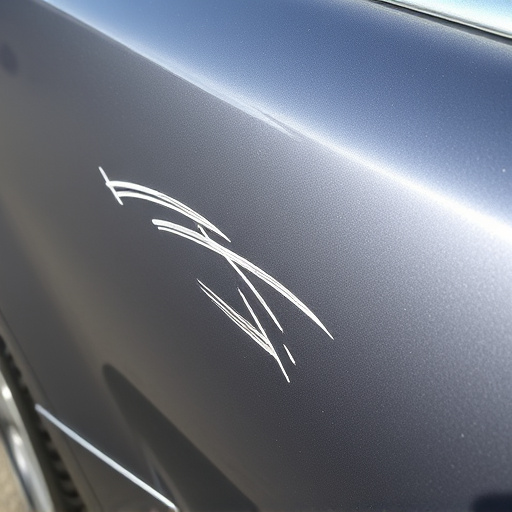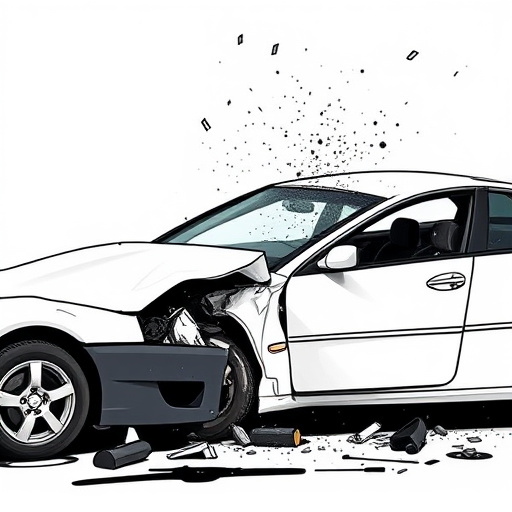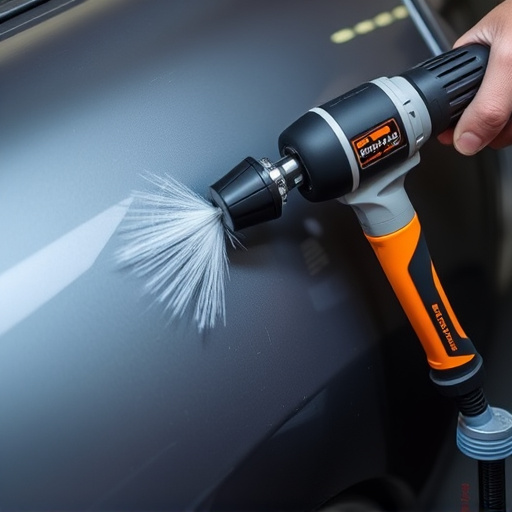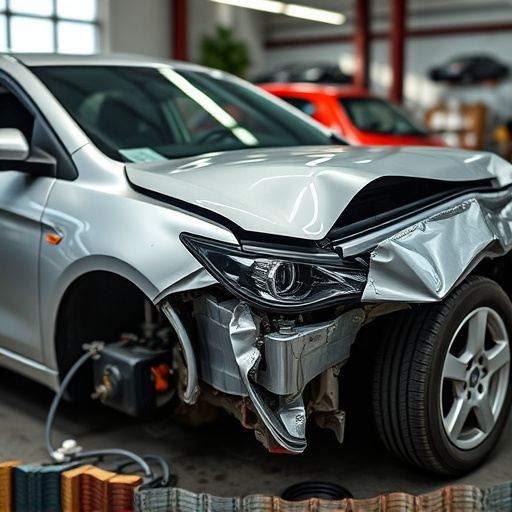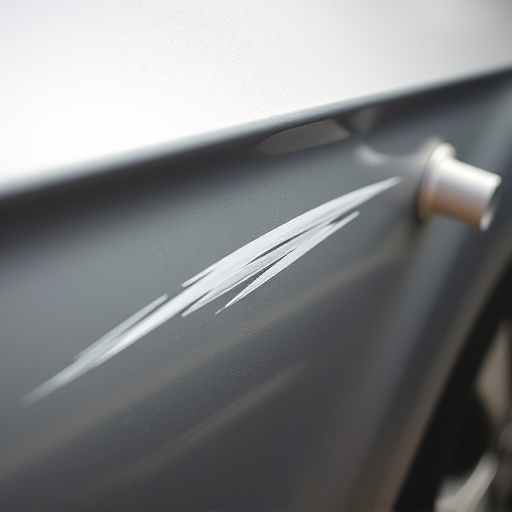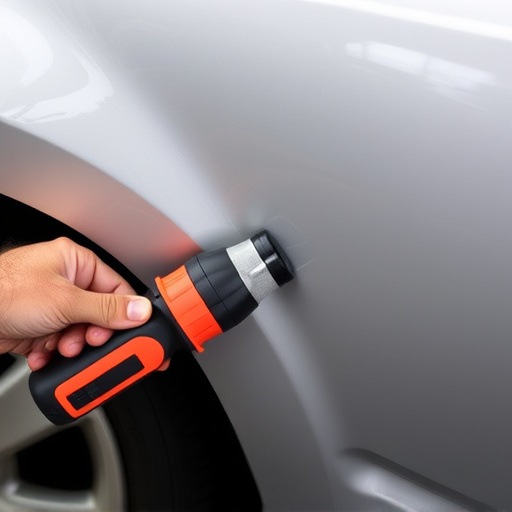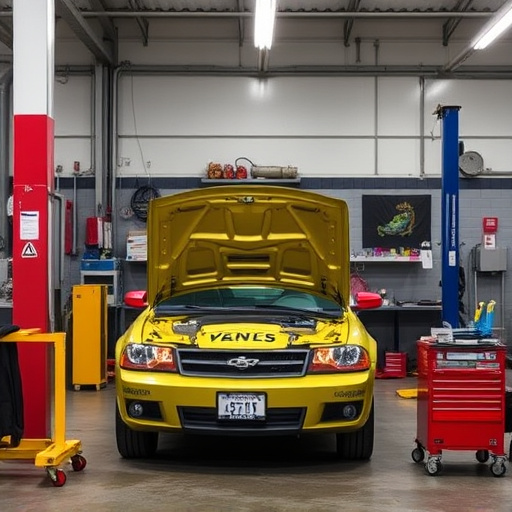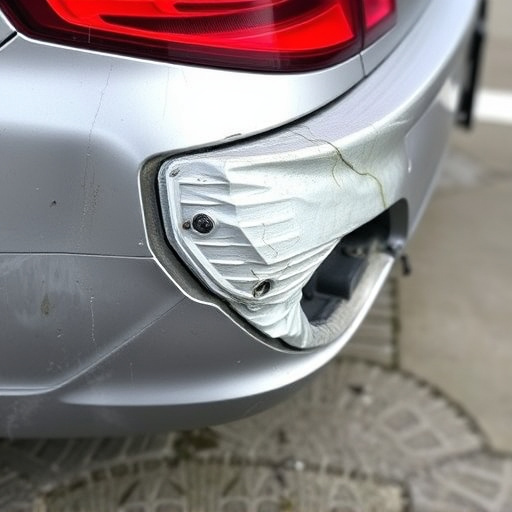Mercedes Lane Assist, a safety feature using sensors and cameras, needs periodic recalibration after suspension adjustments or bodywork to maintain accuracy. Recalibration ensures the system correctly detects lane drift and potential hazards, enhancing safety for Mercedes owners. It's crucial to visit a trusted auto repair shop for this specialized service to meet Mercedes' Advanced Driver Assistance Systems (ADAS) standards and prevent road safety risks from misaligned sensors.
Mercedes’ Lane Assist is an advanced driver-assistance system designed to keep your vehicle centered in its lane. However, after suspension adjustments, a recalibration of this crucial safety feature becomes necessary. This ensures the system accurately detects and corrects lane drift. Learn more about understanding Lane Assist and mastering the process of recalibration when suspension work is done, ensuring optimal performance and enhanced road safety.
- Understanding Mercedes Lane Assist and Its Functionality
- When Is Recalibration of Lane Assist Necessary?
- The Process of Recalibrating Mercedes Lane Assist After Suspension Adjustments
Understanding Mercedes Lane Assist and Its Functionality
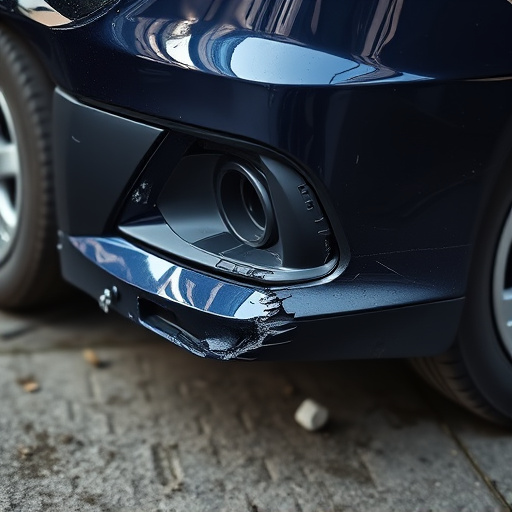
Mercedes Lane Assist is an advanced driver-assistance system designed to enhance safety and comfort on the road. This feature uses a combination of cameras, sensors, and radar to monitor a vehicle’s position within its lane. It can detect if a car drifts out of its lane unintentionally and provides corrective steering assistance to keep the vehicle centered. The system also offers lane-change assist, alerting drivers to potential hazards when changing lanes, thereby reducing the risk of collisions.
Understanding the importance of precise calibration, Mercedes recommends recalibration after any suspension adjustments or significant drive events like off-road adventures or rough terrain driving. Suspension modifications can impact the car’s alignment and sensor readings, leading to inaccuracies in lane assist functionality. Similarly, extreme driving conditions may cause temporary sensor disruptions, necessitating a recalibration to ensure the system functions optimally and provides drivers with reliable assistance for safer motoring experiences.
When Is Recalibration of Lane Assist Necessary?

The Mercedes Lane Assist system is designed to keep your vehicle centered in its lane, preventing accidental drifting and ensuring a safer driving experience. However, this advanced technology requires periodic recalibration, especially after certain adjustments to your car’s suspension. A fender repair or even a minor car scratch repair could impact the sensors’ accuracy, necessitating a Mercedes lane assist recalibration. Similarly, if you’ve undertaken significant bodywork services for repairs or modifications, it’s crucial to realign the system to ensure its continued effectiveness.
Recalibration becomes especially important when suspension adjustments are made, as these changes can disrupt the optimal positioning of the vehicle’s sensors. Over time, factors like road surface imperfections, regular wear and tear, and even sudden impacts can contribute to a misalignment that compromises the Lane Assist system’s performance. Therefore, it’s advisable to have your Mercedes lane assist recalibrated after any substantial suspension work or cosmetic bodywork services to maintain optimal driving assistance.
The Process of Recalibrating Mercedes Lane Assist After Suspension Adjustments

Recalibrating Mercedes Lane Assist after suspension adjustments is a precise process that requires specialized tools and expertise. It involves realigning the vehicle’s sensors to ensure accurate lane departure detection. Following suspension modifications, these adjustments can become compromised, leading to false alerts or no detection at all.
The procedure begins with a thorough inspection of the sensor layout, including camera positioning and alignment. Technicians then use diagnostic tools to run through a series of tests, checking the system’s functionality and identifying any anomalies. Once issues are pinpoint, the recalibration process can commence, fine-tuning the sensors to accurately monitor lane departures and provide appropriate warnings or interventions as per Mercedes’ advanced driver assistance systems (ADAS) specifications. This meticulous approach ensures that your vehicle’s lane assist remains reliable, enhancing safety on the road, and providing peace of mind during every drive, especially when considering the convenience of an auto repair near you for such specialized services.
Mercedes Lane Assist, a safety feature designed to keep vehicles centered in their lane, often requires recalibration after suspension adjustments. This process ensures accurate performance and reliability, especially given the intricate integration of lane-keeping systems with vehicle dynamics. When performing suspension modifications, it’s crucial to understand when and how to recalibrate Mercedes Lane Assist to maintain optimal driving assistance.



